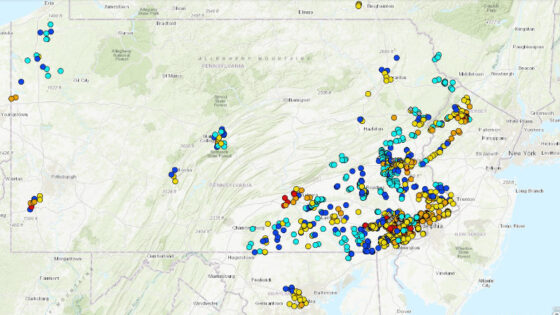Myers, D.T. 2024. National Parks Service, U.S. Department of the Interior.
Introduction
Protected areas like national parks are critical places for conserving freshwater ecosystems. But even in parks, streams can still be vulnerable to degradation from human activities in the surrounding watersheds.
Today, freshwater salinization due to pollution from deicing salt runoff, sewage, and urban stormwater is degrading stream ecosystems throughout National Capital Region parks. Deicing salts (often sodium chloride) are applied to roads, parking lots, and other surfaces to keep them safe and reduce icy conditions.
Streams suffering from salinization often have degraded communities of fish and invertebrates with lower biodiversity where only pollution-tolerant species can survive. This negatively impacts the whole aquatic ecosystem. Aquatic critters such as mayflies (an important food for fish) are sensitive to pollution, so they are rare in salinized streams. For other organisms, too much salt causes their health to weaken and impairs their survival.
Still, parks have value for protecting streams from salinization, since streams with watersheds mostly contained inside of parks are faring much better than those with watersheds extending beyond park boundaries.



